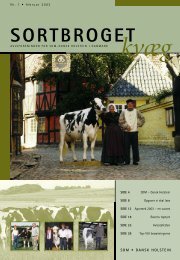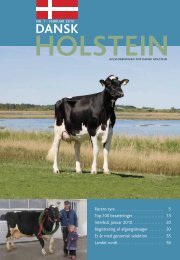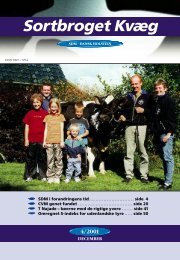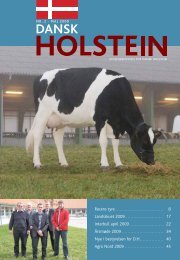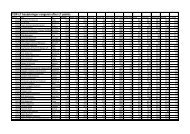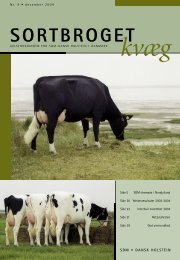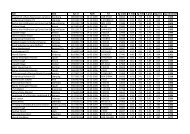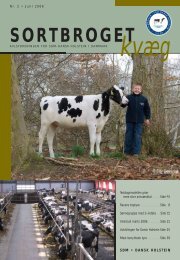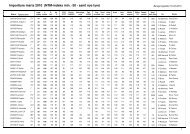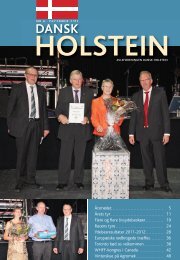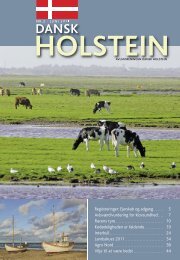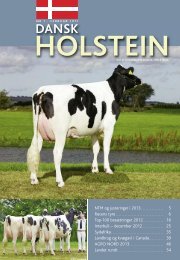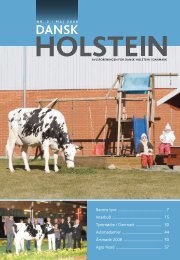2012 WORLD HOLSTEIN CONFERENCE - Dansk Holstein
2012 WORLD HOLSTEIN CONFERENCE - Dansk Holstein
2012 WORLD HOLSTEIN CONFERENCE - Dansk Holstein
You also want an ePaper? Increase the reach of your titles
YUMPU automatically turns print PDFs into web optimized ePapers that Google loves.
SESSION 1: THE GENOMIC REVOLUTIONWhat’s Coming Next in GenomicsBEN HAYS (AUSTRALIA)Dr. Ben Hayes has a wide ranging career designing geneticimprovement programs for beef cattle, sheep and Atlantic salmon.However, his focus for the past five years has been the development ofgenomic selection methods, particularly for dairy cattle. Recent workhas addressed the challenges of optimal breeding program designwith genomic selection, incorporating whole genome sequenceinformation into genomic selection in the 1000 bull genomes project,as well as improving feed conversion of dairy cattle. Dr. Hayescurrently leads the dairy cattle genetics program in the Dairy FuturesCooperative Research Centre.Genomic breeding values are now widely used for selection of bulls, and heifers, in dairy industries around the world.The are three major challenges for the future 1) improving the reliability of genomic breeding values 2) reducing thecost of genomic breeding values and 3) expanding the list of traits for which genomic breeding values are available for,to include traits which are likely to be important in the future such as feed conversion efficiency and methane emissionlevels.The first challenge could be met by both increasing the size of the reference populations used to estimate DNA varianteffects (eg more bulls and cows genotyped with excellent records), and moving from DNA markers (eg SNP chips) to fullgenome sequence. Unfortunately the cost of sequencing is such that it is unlikely that the entire reference populationwill be sequenced. An alternative strategy is to sequence key ancestor bulls of the current <strong>Holstein</strong> populations (usuallythe “legends” of the breed), then impute the genotypes for the sequence variants into much larger reference sets withphenotypes and SNP chip genotypes. The 1000 Bull Genomes Project is an international project with precisely this aim.If the cost of obtaining genomic breeding values (including DNA marker genotyping) could be significantly reduced,they could be more widely used to select heifer replacements. This would have the great advantage that hundredsof thousands of genotyped heifers would eventually become part of the reference population, which would in turnimprove the reliability of the genomic breeding values. New technologies to reduce cost of genomic breeding valuesare discussed.Finally, genomic breeding values offer the opportunity to select for traits which contribute to profit, but would otherwisebe prohibitively expensive to measure. Feed conversion efficiency (eg the efficiency of turning feed into milk) is anexcellent example. Australian and international progress toward feed conversion efficiency genomic breeding valuesare described.10



